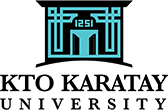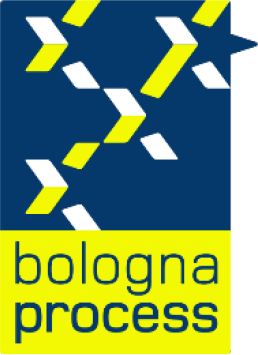Medical Imaging Techniques
Course Details

KTO KARATAY UNIVERSITY
Vocational School of Medical Services
Programme of Medical Imaging Techniques
Course Details
Vocational School of Medical Services
Programme of Medical Imaging Techniques
Course Details

| Course Code | Course Name | Year | Period | Semester | T+A+L | Credit | ECTS |
|---|---|---|---|---|---|---|---|
| 02921002 | Infectious Diseases | 1 | Spring | 2 | 2+0+0 | 3 | 3 |
| Course Type | Elective |
| Course Cycle | Associate (Short Cycle) (TQF-HE: Level 5 / QF-EHEA: Short Cycle / EQF-LLL: Level 5) |
| Course Language | Turkish |
| Methods and Techniques | - |
| Mode of Delivery | Face to Face |
| Prerequisites | - |
| Coordinator | - |
| Instructor(s) | Lect. Cemile Nida KAYIŞ |
| Instructor Assistant(s) | - |
Course Content
Infectious diseases epidemiology of infections caused by microorganisms and virulence factors of general epidemiological principles infectious diseases, diseases, vaccines host defense mechanisms and serum immunization and treatment of urinary tract infections in a group A beta-hemolytic streptococcal infections, pulmonary and extrapulmonary tuberculosis, viral hepatitis and sexually transmitted diseases, acquired immunodeficiency syndrome and prevention of infectious complications of blood and blood products for transfusion transmitted infections in blood and medical personnel, hospital infections and prevention of hospital infections and medical personnel to wash their hands frequently seen infections in hemodialysis patients.
Objectives of the Course
Introduction to infectious diseases, general information, respiratory, urinary tract, nervous system, skin, mucous membranes and genital tract infections, parasitic infections, nosocomial infections in dialysis patients, aims to provide information on its control of infectious diseases
Contribution of the Course to Field Teaching
| Basic Vocational Courses | |
| Specialization / Field Courses | |
| Support Courses | X |
| Transferable Skills Courses | |
| Humanities, Communication and Management Skills Courses |
Relationships between Course Learning Outcomes and Program Outcomes
| Relationship Levels | ||||
| Lowest | Low | Medium | High | Highest |
| 1 | 2 | 3 | 4 | 5 |
| # | Program Learning Outcomes | Level |
|---|---|---|
| P2 | Has knowledge of general medical terms, first aid issues related to anatomical and physiological issues related to the field of health, and uses applied knowledge. | 3 |
| P | 4 |
Weekly Detailed Course Contents
| Week | Topics |
|---|---|
| 1 | Tıbbi Mikrobiyoloji Ve Enfeksiyon Hastalıklarına Giriş (Virüs, Bakteri, Parazit ve Mantarların Genel Özellikleri) |
| 2 | Staphylococci and the clinical conditions they cause |
| 3 | Streptococci and the clinical conditions they cause |
| 4 | E. Coli and the clinical conditions it causes |
| 5 | Brucella and the clinical pictures it causes |
| 6 | Sterilization and Disinfection |
| 7 | Hospital infections, their agents and general approach |
| 8 | Microbiological and Clinical Features of Viral Hepatitis |
| 9 | Microbiological and Clinical Features of HIV Infection |
| 10 | Pregnancy and TORCH infections |
| 11 | Mycobacterium tuberculosis and tuberculosis disease |
| 12 | Entamoeba histolytica and Giardia Infections |
| 13 | Opportunistic mycosis agents and the clinical pictures they cause |
| 14 | General repetition |
Textbook or Material
| Resources | Infectious Diseases and Clinical Microbiology Turkish Hospital Infection Control Handbook Turkish |
Evaluation Method and Passing Criteria
| In-Term Studies | Quantity | Percentage |
|---|---|---|
| Attendance | - | - |
| Laboratory | - | - |
| Practice | - | - |
| Field Study | - | - |
| Course Specific Internship (If Any) | - | - |
| Homework | - | - |
| Presentation | - | - |
| Projects | - | - |
| Seminar | - | - |
| Quiz | - | - |
| Listening | - | - |
| Midterms | 1 | 40 (%) |
| Final Exam | 1 | 60 (%) |
| Total | 100 (%) | |
ECTS / Working Load Table
| Quantity | Duration | Total Work Load | |
|---|---|---|---|
| Course Week Number and Time | 14 | 2 | 28 |
| Out-of-Class Study Time (Pre-study, Library, Reinforcement) | 14 | 2 | 28 |
| Midterms | 1 | 14 | 14 |
| Quiz | 0 | 0 | 0 |
| Homework | 0 | 0 | 0 |
| Practice | 0 | 0 | 0 |
| Laboratory | 0 | 0 | 0 |
| Project | 0 | 0 | 0 |
| Workshop | 0 | 0 | 0 |
| Presentation/Seminar Preparation | 0 | 0 | 0 |
| Fieldwork | 0 | 0 | 0 |
| Final Exam | 1 | 20 | 20 |
| Other | 0 | 0 | 0 |
| Total Work Load: | 90 | ||
| Total Work Load / 30 | 3 | ||
| Course ECTS Credits: | 3 | ||
